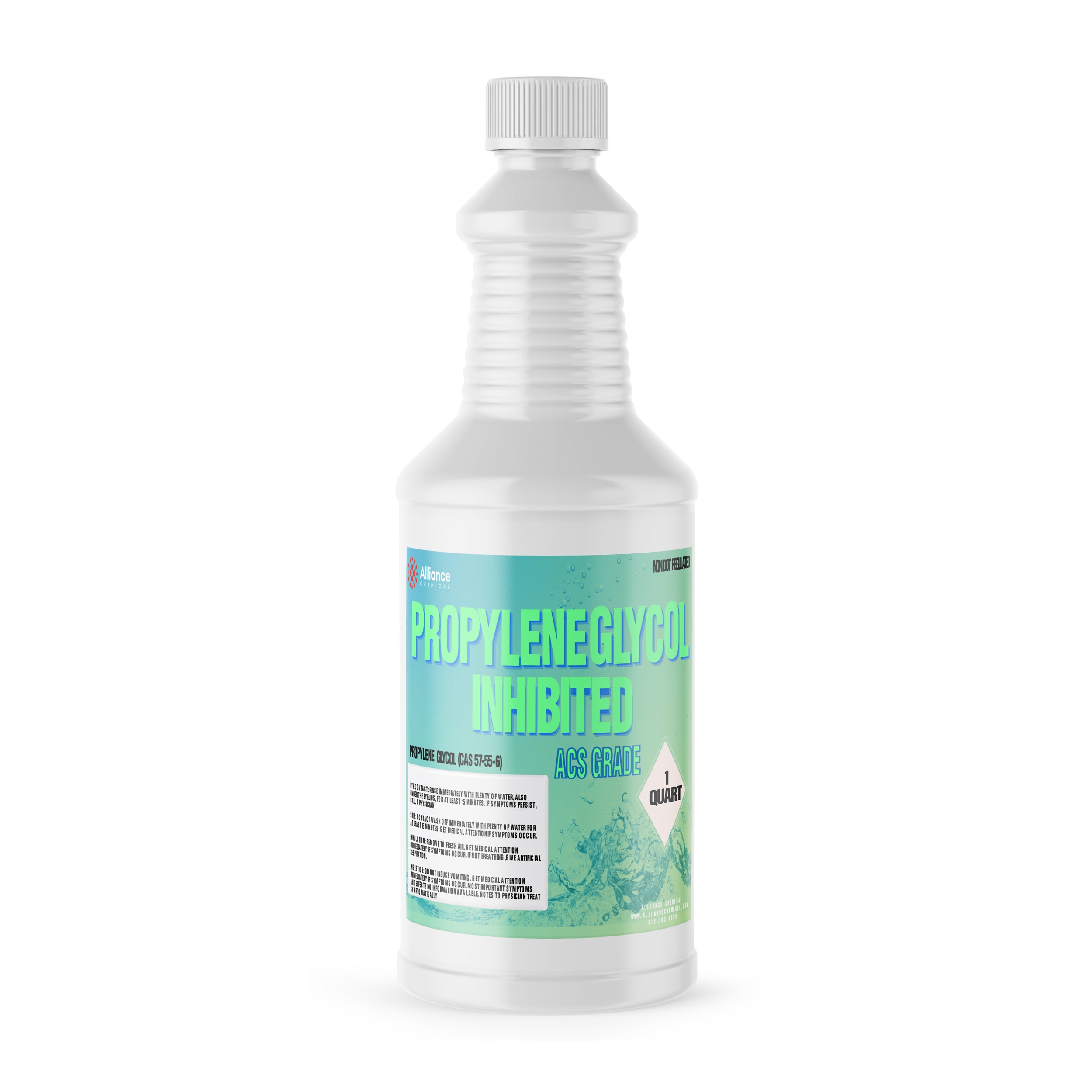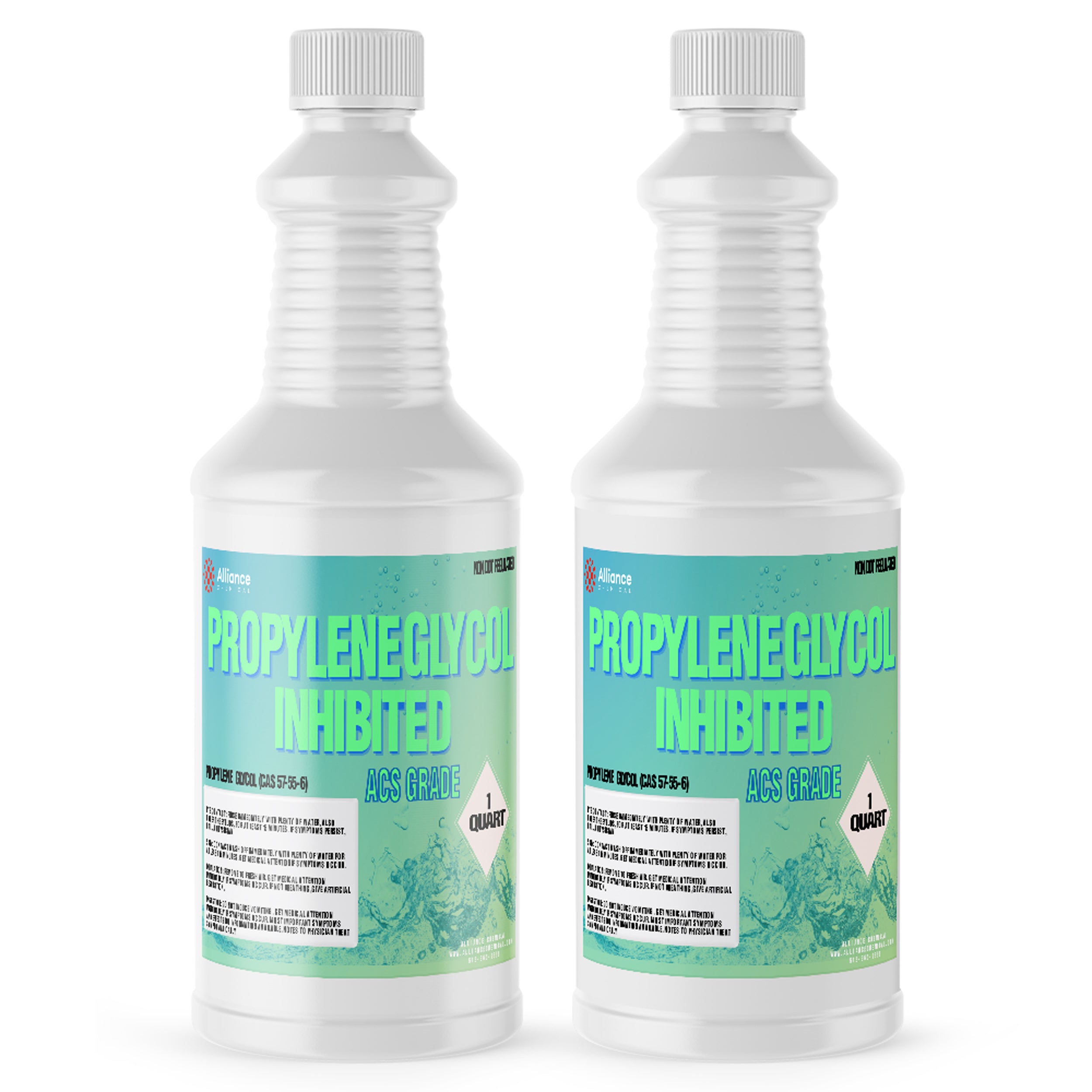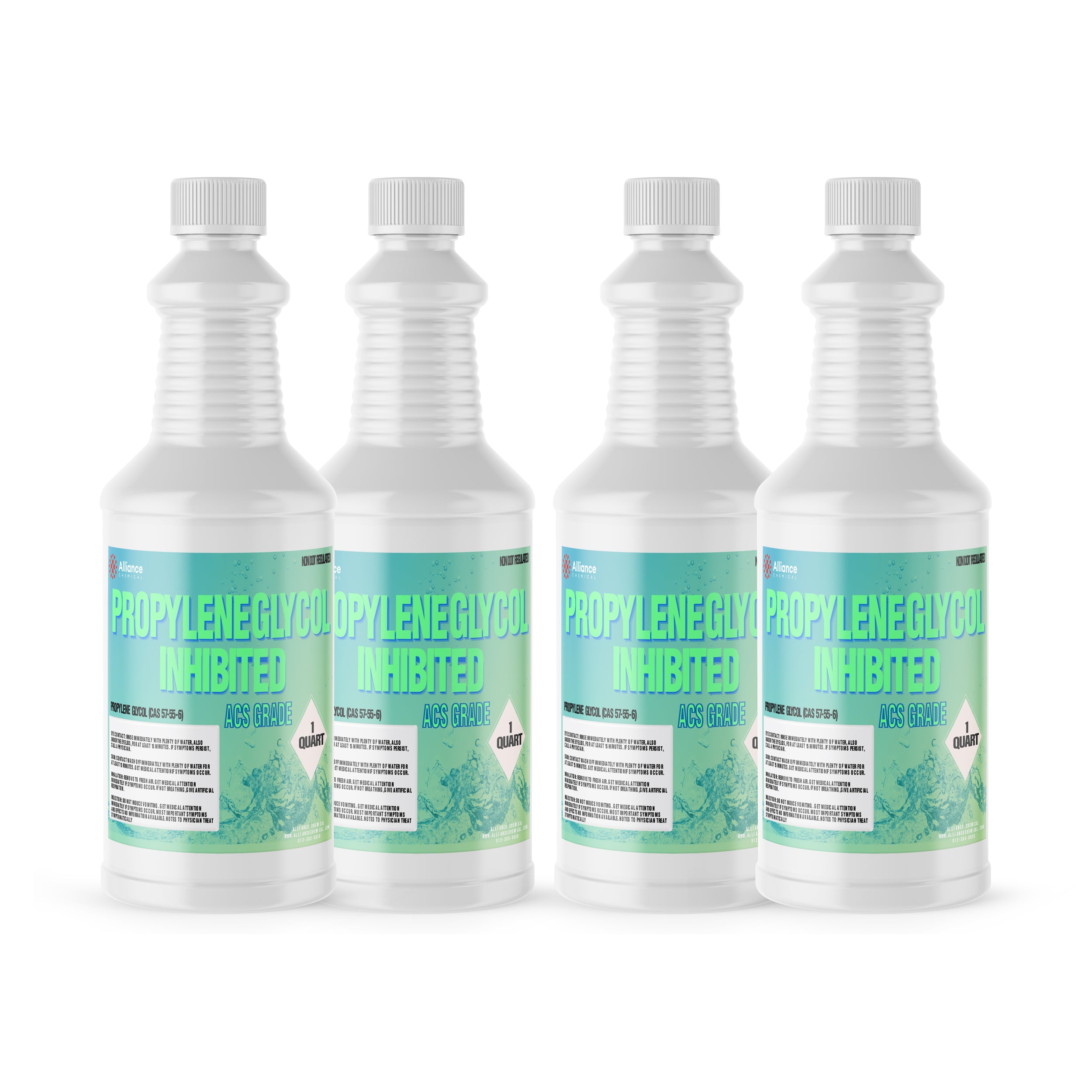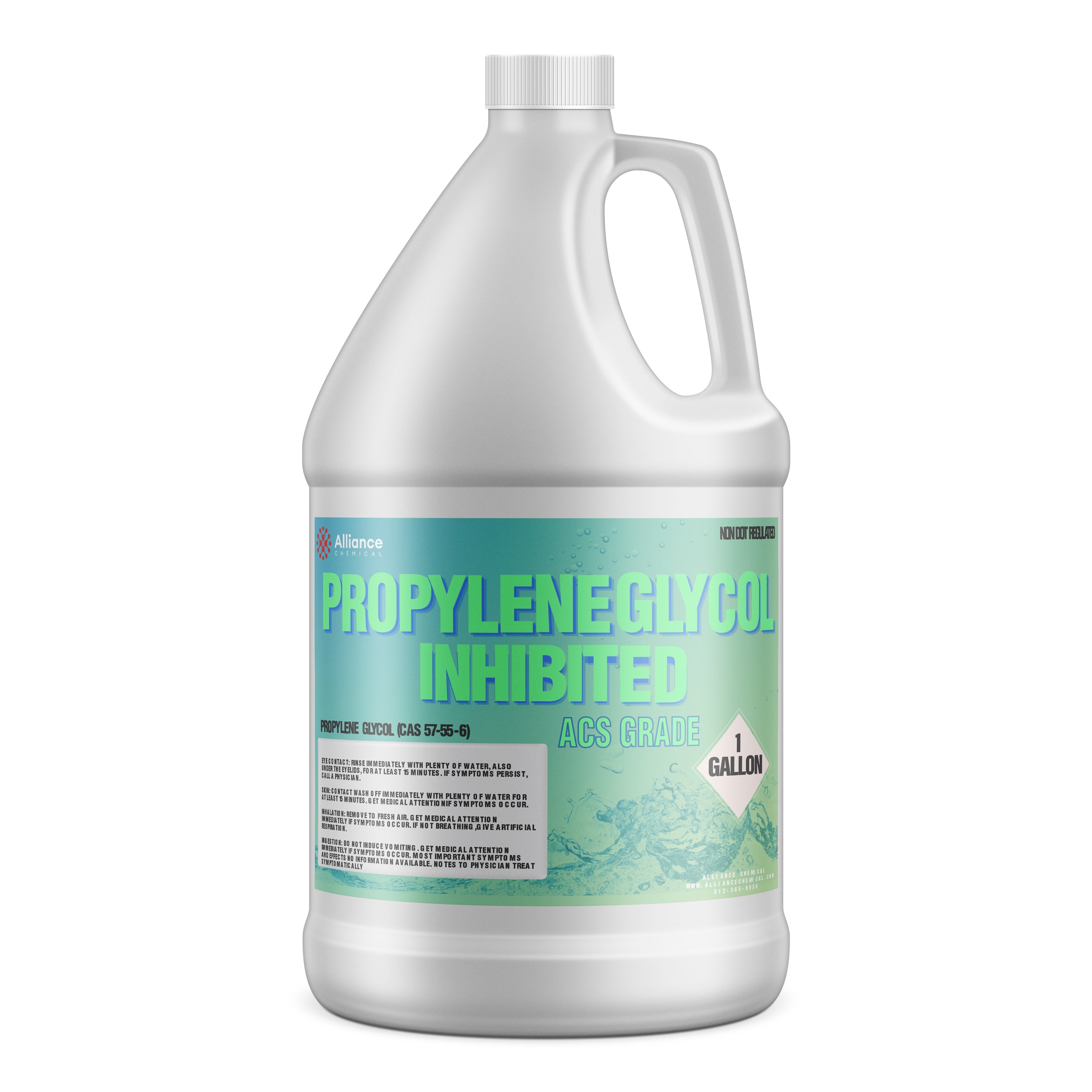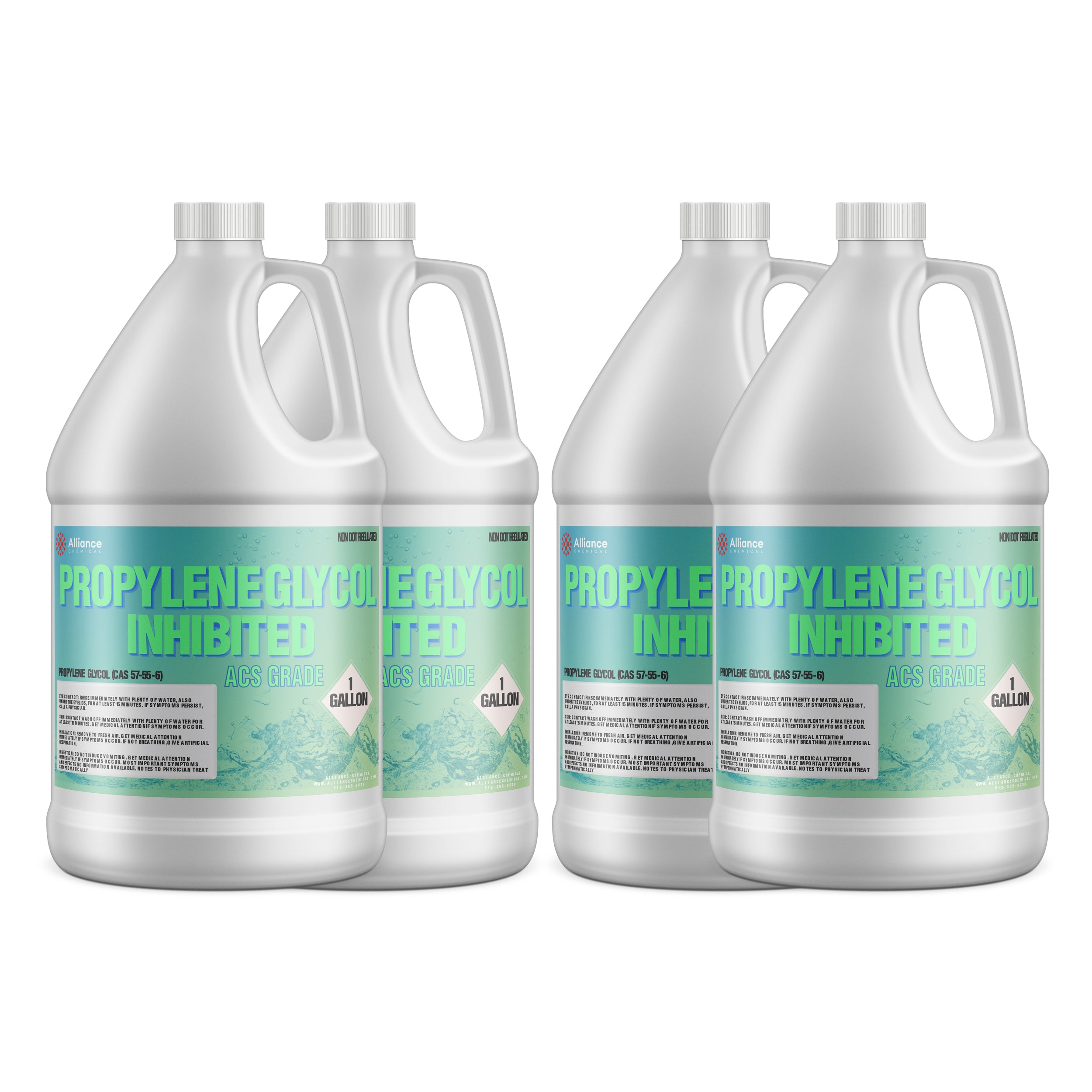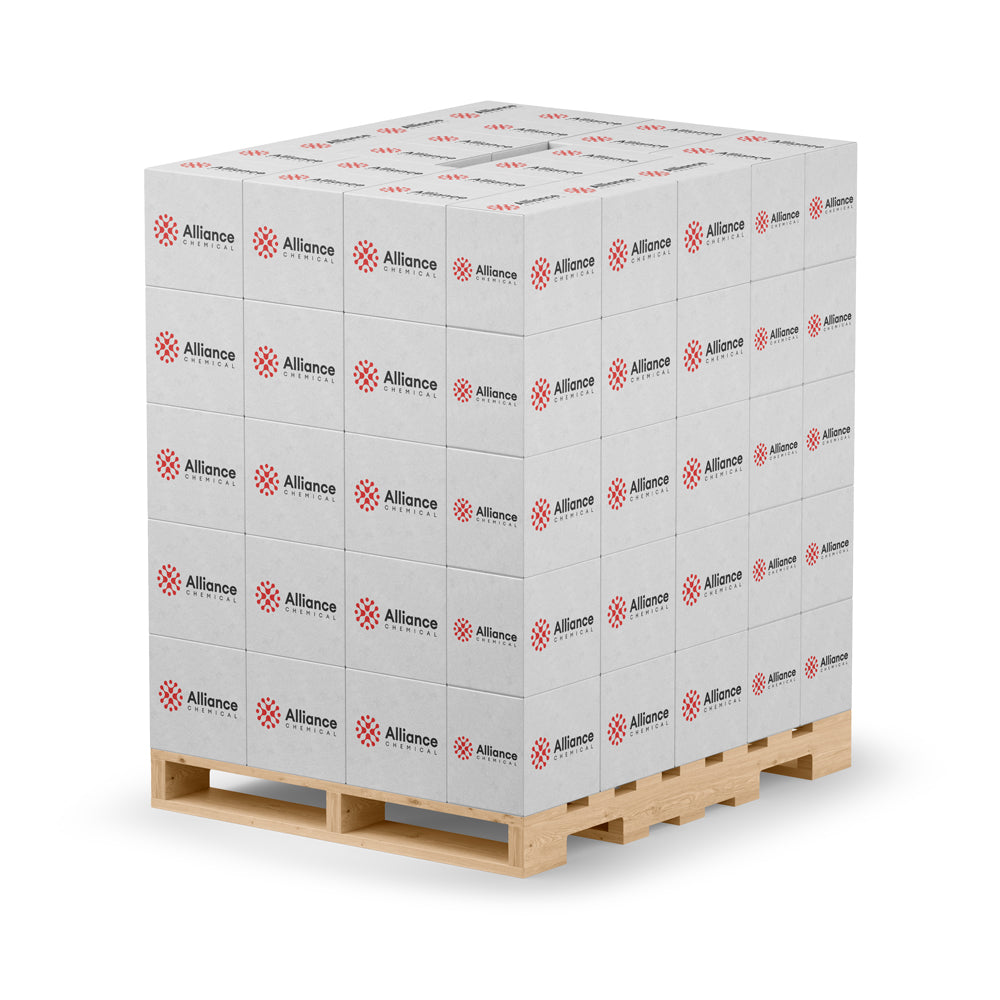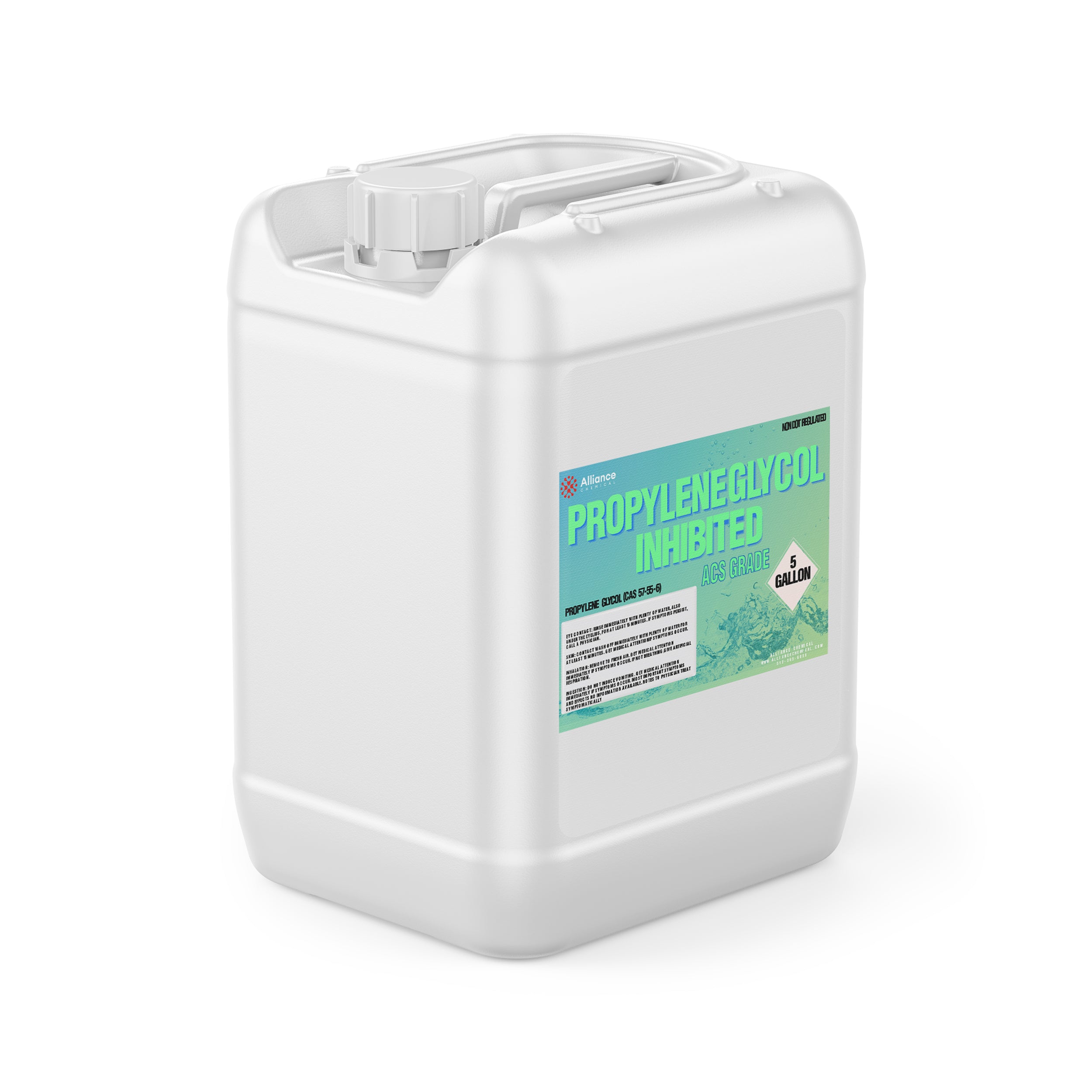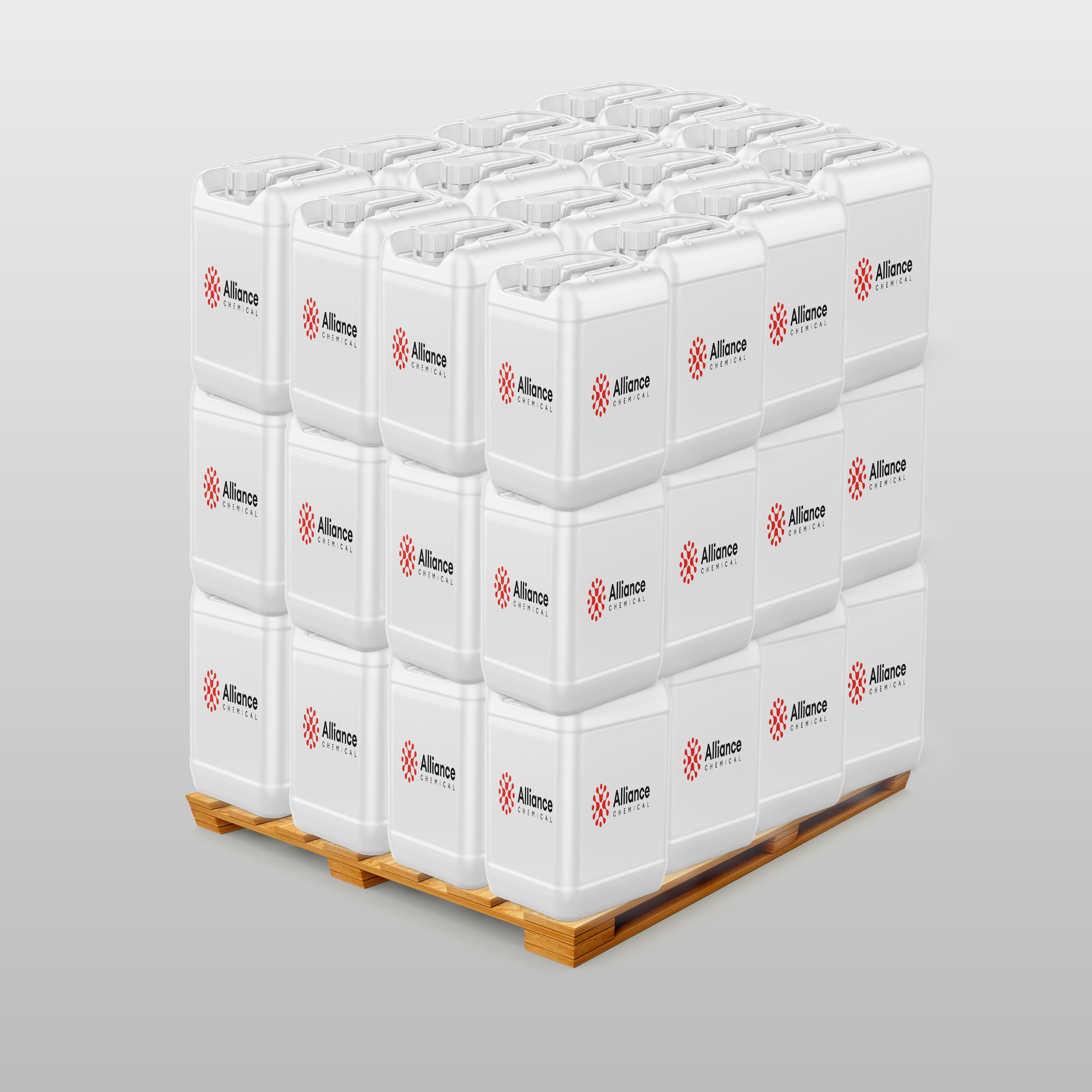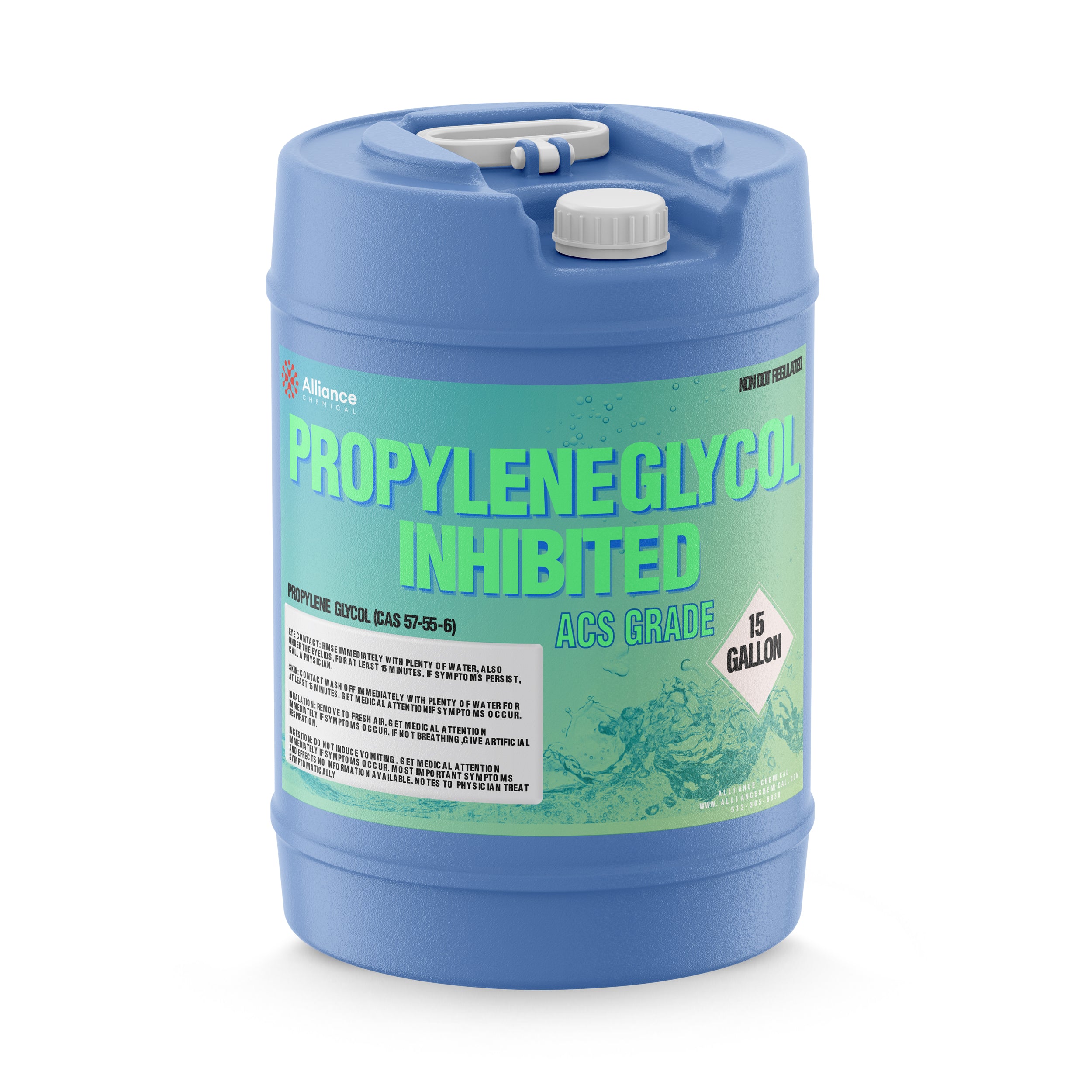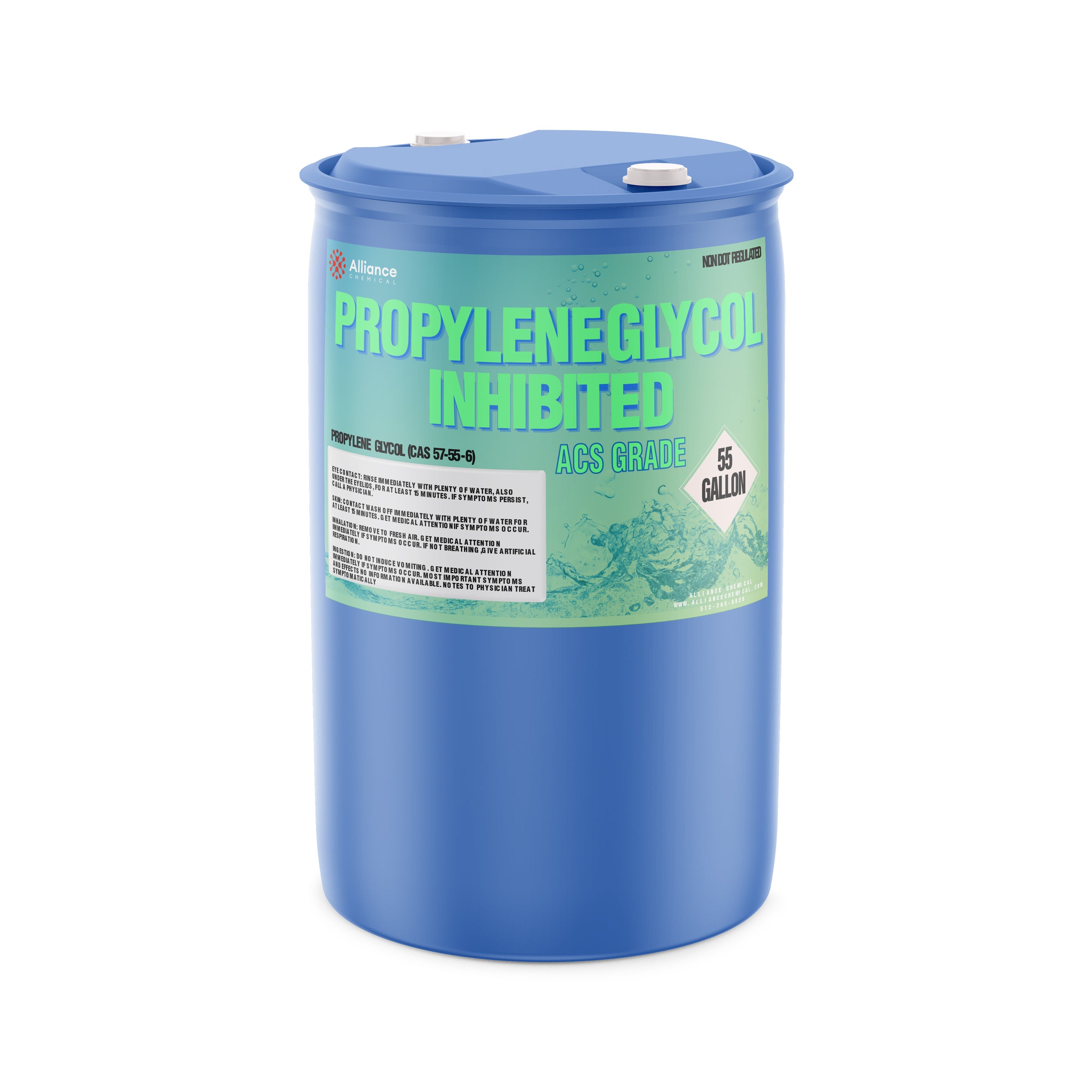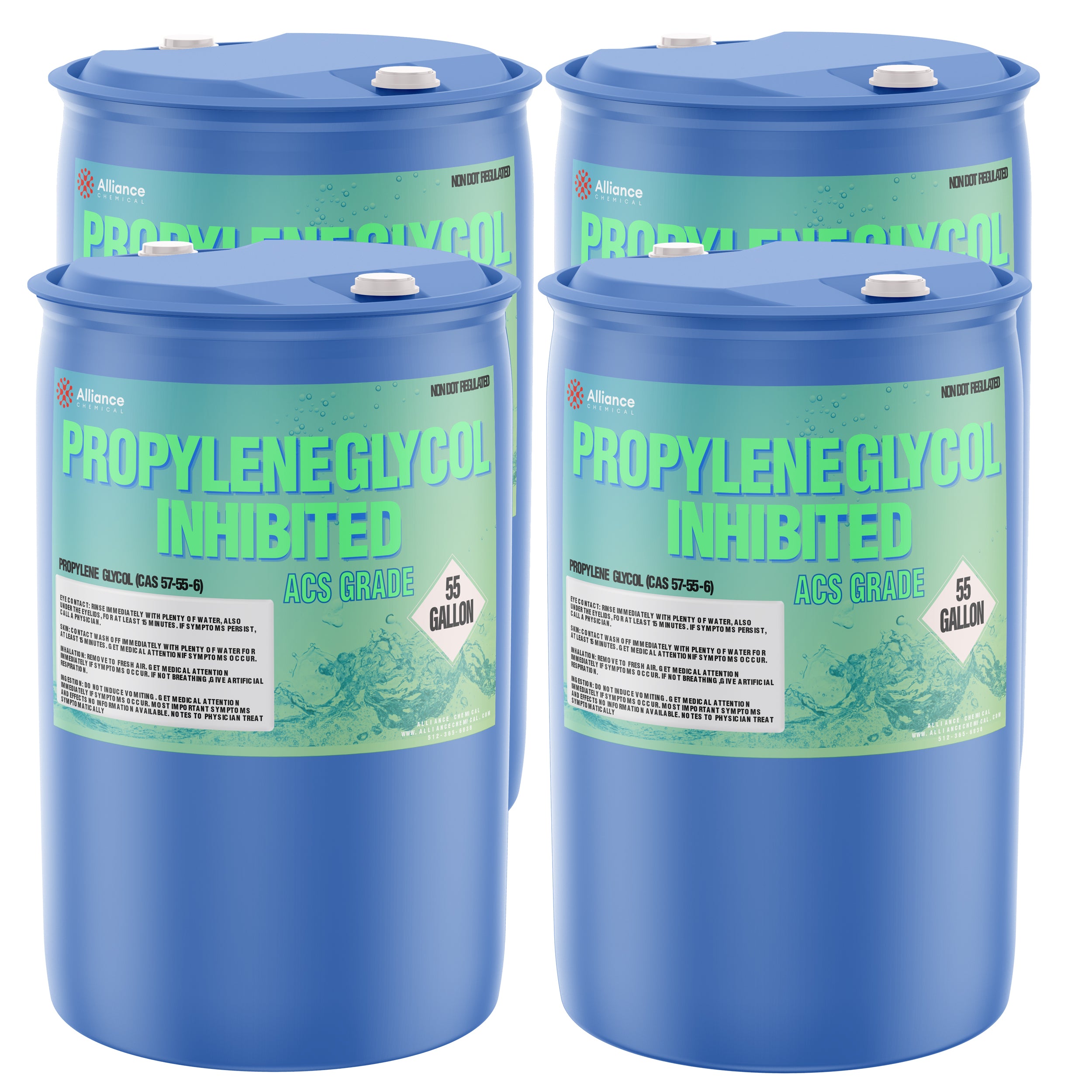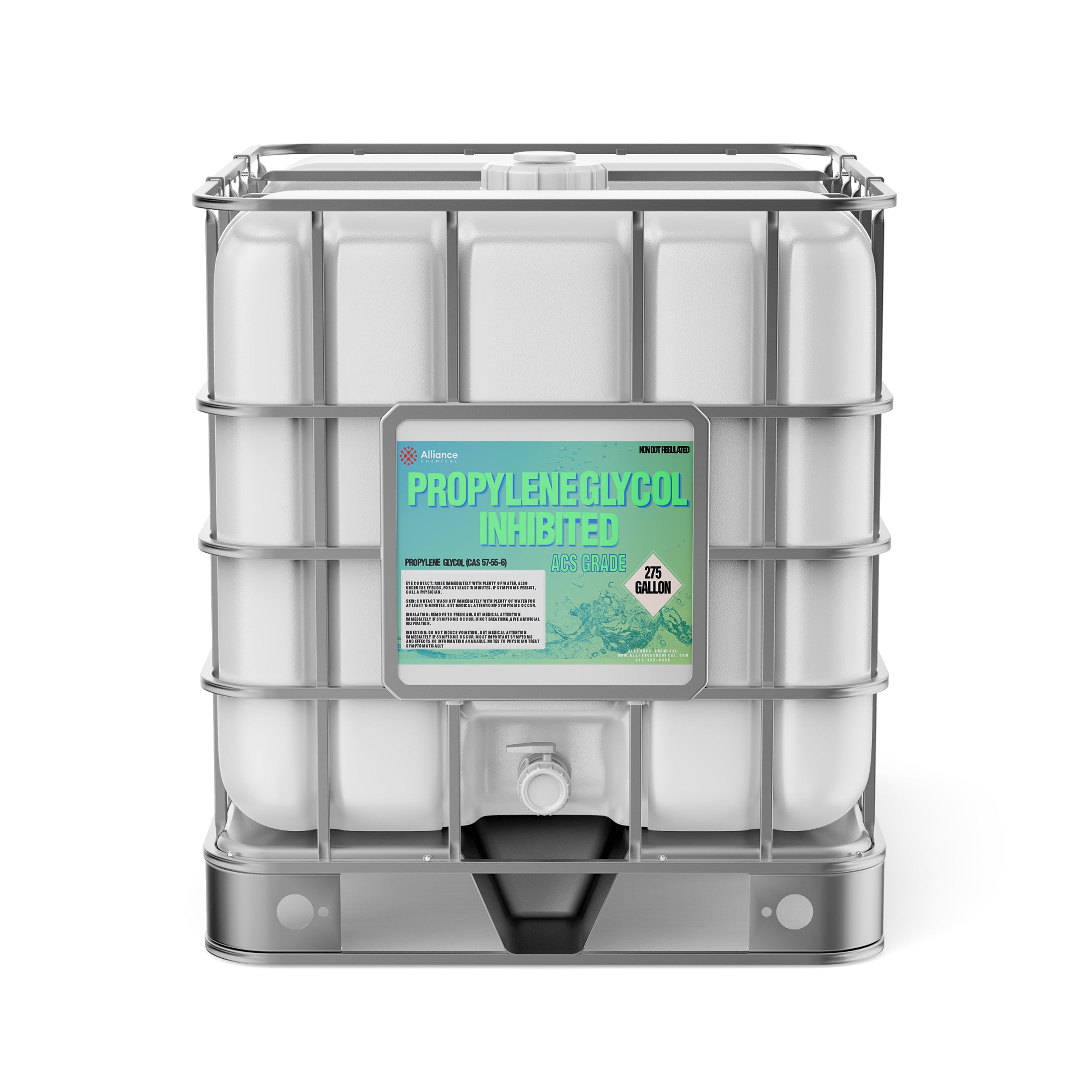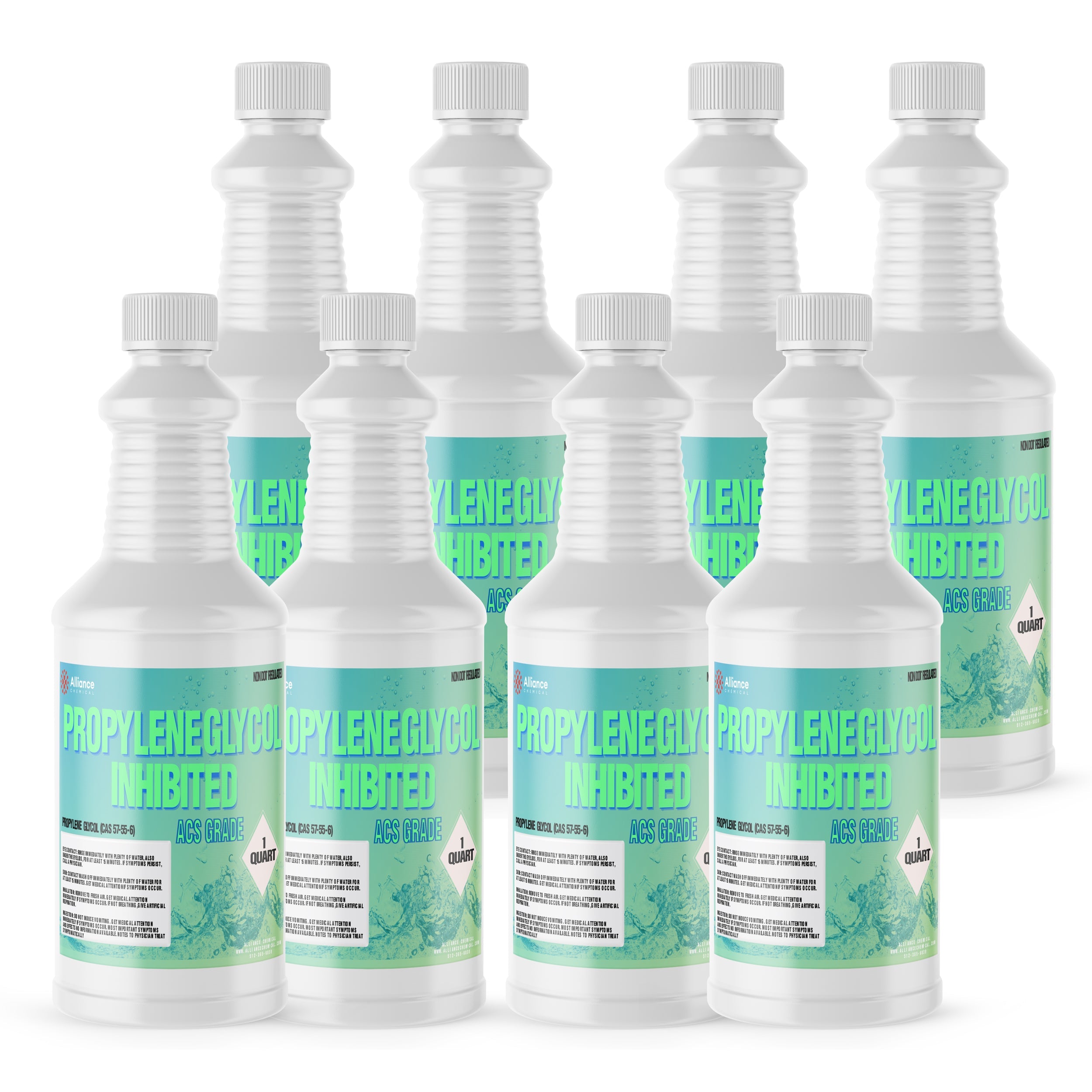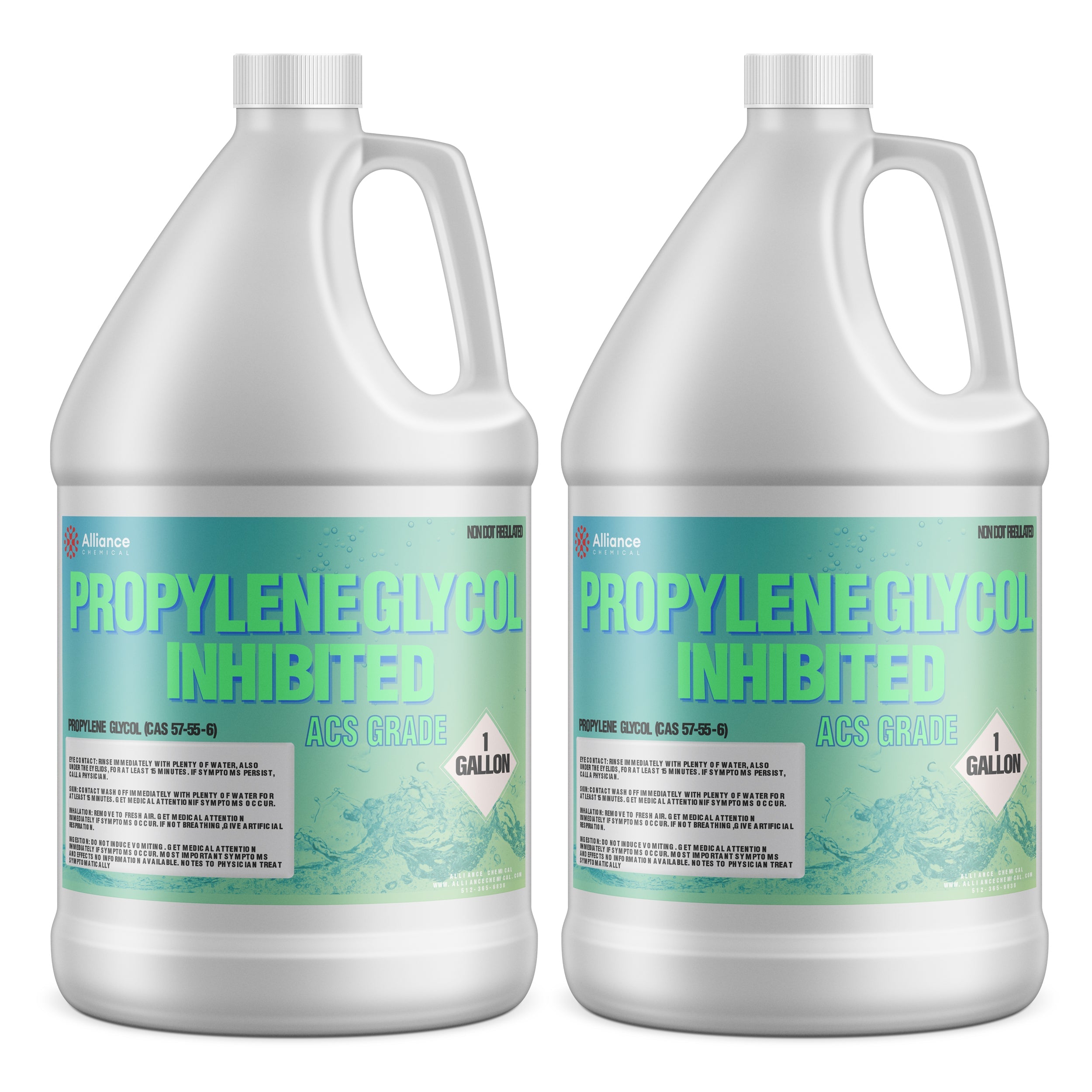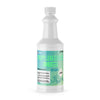Ask a question
Product Overview
Propylene Glycol Inhibited ACS Grade is a high-purity synthetic organic solvent with the chemical formula C₃H₈O₂. This colorless, odorless liquid is hygroscopic and fully miscible with water, acetone, and chloroform, enabling its use as a versatile solvent and processing aid across analytical, pharmaceutical, and industrial applications. The product adheres to ACS reagent and USP-NF monograph requirements, with a typical assay weight percentage near 99.8% and a precise low impurity profile that supports stringent formulation needs. Its physical properties—boiling point around 188.2°C, density near 1.036 g/mL at 25°C, and a refractive index of 1.431 at 20°C—facilitate predictable performance in controlled manufacturing and analytical workflows.
The inhibited formulation minimizes moisture uptake and stabilizes product quality during storage and use. The material is typically supplied in temperature-controlled environments to maintain purity, with extensive compliance to industry standards and testing methodologies (e.g., titration of assay with standardized NaOH, APHA/Hazen color assessment, ICP-MS/IC for trace metals and anions). This ensures compatibility with high-purity requirements in chemical synthesis, chromatography, and pharmaceutical solvent derivations while supporting reliable lot-to-lot consistency and traceability.
Key Properties
- Appearance: Clear, colorless liquid
- Odor: Slightly sweet odor
- Chemical Formula: C₃H₈O₂
- Molecular Weight: 76.09 g/mol
- Boiling Point: 188.2°C
- Freezing Point: -59°C
- Specific Gravity (20°C): 1.033–1.037 (typical 1.0355)
- Specific Gravity (25°C): 1.0335–1.0375 (typical 1.0359)
- Density (25°C): 1.036 g/mL
- Vapor Pressure (20°C): 0.1 mmHg
- Viscosity (25°C): 59 cP
- Refractive Index (20°C): 1.431
- Residue on Ignition: max 0.005%
- Chloride (Cl) ppm: max 5 (typical 2)
- Nitrate (NO₃⁻) ppm: max 5 (typical 1)
- Ammonium (NH₄⁺) ppm: max 2 (typical 0.5)
- Sulfate (SO₄²⁻) ppm: max 10 (typical 3)
- Phosphate (PO₄³⁻) ppm: max 5 (typical 1)
- Arsenic (As) ppm: max 0.1 (typical 0.02)
- Heavy Metals (as Pb) ppm: max 0.5 (typical 0.1)
- Iron (Fe) ppm: max 0.2 (typical 0.05)
- Copper (Cu) ppm: max 0.5 (typical 0.1)
- Manganese (Mn) ppm: max 0.5 (typical 0.1)
- Zinc (Zn) ppm: max 2 (typical 0.5)
- Aluminum (Al) ppm: max 2 (typical 0.5)
- Chromium (Cr) ppm: max 0.5 (typical 0.1)
- Cobalt (Co) ppm: max 0.5 (typical 0.1)
- Calcium (Ca) ppm: max 2 (typical 0.5)
- Magnesium (Mg) ppm: max 2 (typical 0.5)
- Potassium (K) ppm: max 1 (typical 0.3)
- Sodium (Na) ppm: max 1 (typical 0.3)
- Substances Reducing Permanganate: Passes test (Potassium permanganate time test)
- Sulfurous Acid (H₂SO₃) ppm: max 1 (typical 0.2)
Common Applications
- HPLC Mobile Phase: Analytical Chemistry—used as a mobile phase component in reversed-phase HPLC to separate organic compounds with high reproducibility and compatibility with UV detection.
- Humectant in Food Products: Food Industry—retains moisture, supporting texture, mouthfeel, and extended shelf life while meeting purity standards for formulation work.
- Solvent in Pharmaceutical Formulations: Pharmaceutical—solvent for active pharmaceutical ingredients in various dosage forms, with ACS/USP compliance.
- Antifreeze in Cooling Systems: Industrial—non-toxic antifreeze agent providing thermal stability and downstream compatibility in cooling circuits.
- Carrier Fluid in Hydraulic Systems: Industrial—used as a carrier fluid in hydraulic systems due to low viscosity and favorable thermal properties for power transmission.
- Solvent for Synthesis and Cleaning: Chemical Processing—serves as a high-purity solvent for reactions, intermediate cleaning, and equipment sanitization where trace metals must be controlled.
Safety Precautions
Handling and storage should follow rigorous procedures: store in a cool, dry place away from direct sunlight, in containers made of HDPE or glass to prevent contamination, and ensure good ventilation during handling to minimize inhalation exposure. Use appropriate PPE including gloves and safety goggles; keep tightly closed when not in use and shield from heat sources to prevent decomposition. Follow the SDS for specific PPE recommendations and emergency procedures, and ensure compatibility with compatible materials in process equipment to avoid container reactions.
Additional safety considerations include maintaining low moisture exposure to preserve purity, monitoring trace metals per ICP-OES/ICP-MS methods, and adhering to standard operating procedures for oxidation-sensitive formulations. In case of contact with eyes or skin, rinse thoroughly with water and seek medical advice if irritation persists; in the event of ingestion or inhalation, follow the SDS-directed first aid and seek medical attention as needed. Transport is not regulated as a hazardous material, but standard chemical handling practices apply.
Benefits
✔ High Purity ACS Grade – Meets ACS Reagent Grade and USP-NF monograph expectations, ensuring reliability in critical applications.
✔ Excellent Purity Profile – Low levels of chlorides, nitrates, sulfates, and heavy metals support stringent formulation requirements.
✔ Stable Physical Properties – Consistent specific gravity, viscosity, and refractive index across standard storage conditions enable reproducible results.
✔ Broad Solvent Compatibility – Miscible with water and common organic solvents, facilitating versatile use in analytical and pharmaceutical workflows.
| Property | Value |
|---|---|
| Molecular Weight | 76.09 g/mol |
| Formula | C3H8O2 |
| Assay | 100%% |
| Grade | ACS |
| Flash Point | 104 |
| Form | Liquid |
| Solubility | Highly water miscible, broad organic solvent compatibility |
| Appearance | Clear, colorless viscous liquid |
| Melting Point | -59 °C |
| Boiling Point | 188 °C |
| Specific Gravity | 1.036 |
| Industry | Industrial, Research, Chemical Manufacturing |
VK6-55L-D39
$21.43
Unit price
Compare Products
| Price |
|---|
| SKU |
| Rating |
| Discount |
| Vendor |
| Tags |
| Weight |
| Stock |
| Short Description |

